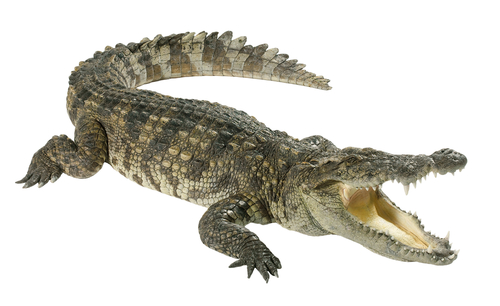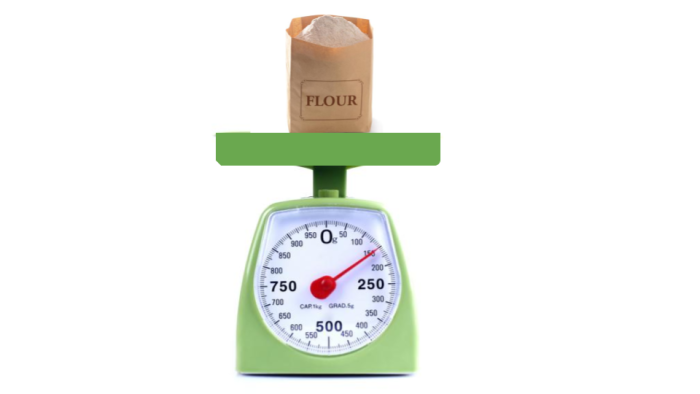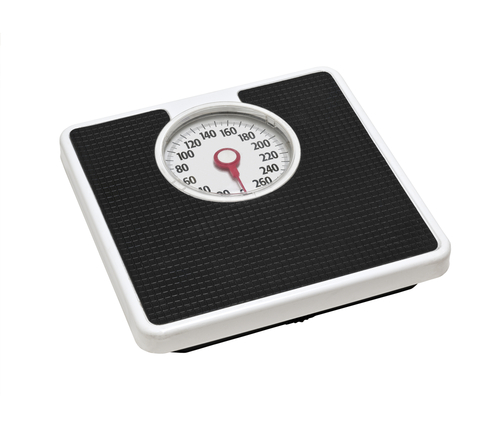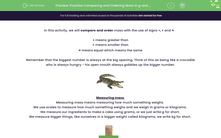In this activity, we will compare and order mass with the use of signs >, < and =
> means greater than
< means smaller than
= means equal which means the same
Remember that the biggest number is always at the big opening. Think of this as being like a crocodile who is always hungry - his open mouth always gobbles up the bigger number.

Measuring mass
Measuring mass means measuring how much something weighs.
We use scales to measure how much something weighs and we weigh in grams or kilograms.
We measure our ingredients to make a cake using grams, or we just write g for short.
We measure bigger things, like ourselves in a bigger weight called kilograms, we write kg for short.

Here, these scales are measuring the mass of this bag of flour. It weighs 150 grams, or 150 g.

Here, these scales would measure the mass of a person, and this is measured in kilograms.
A child may weigh around 20 kg.
We will be comparing g and kg in these questions.
1,000 g makes 1 kg.
Let's have a look at this with a picture:
.png)
Each little bowl of sugar is 100 g and 10 bowls of 100 g makes 1,000 g which is the same as 1 kg.
So, this picture shows 1,000 g and 1 kg.
Example
Fill in the missing symbol: >, < or =
100 g .gif) 2 kg
2 kg
Answer
First, let's work out which amount is bigger.
Let's remember that 1,000 g = 1 kg. This means that 2 kg = 2,000 g.
So, what is bigger? 2,000 g or 100 g?
2,000 g is bigger, which means that 2 kg is bigger.
The crocodile eats the bigger number so it needs to eat 2 kg:
100 g < 2 kg
This reads that 100 g is smaller than 2 kg.
The answer was the smaller than sign.
Are you ready to have a go at some questions now?








